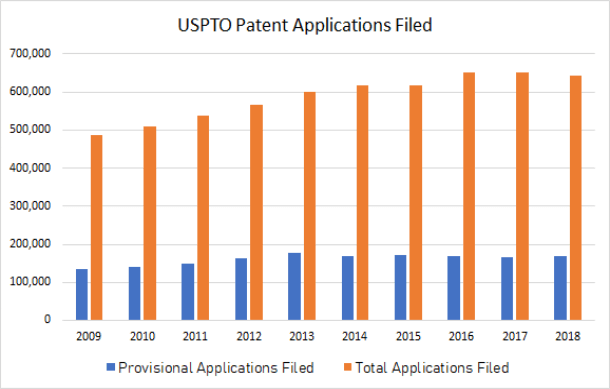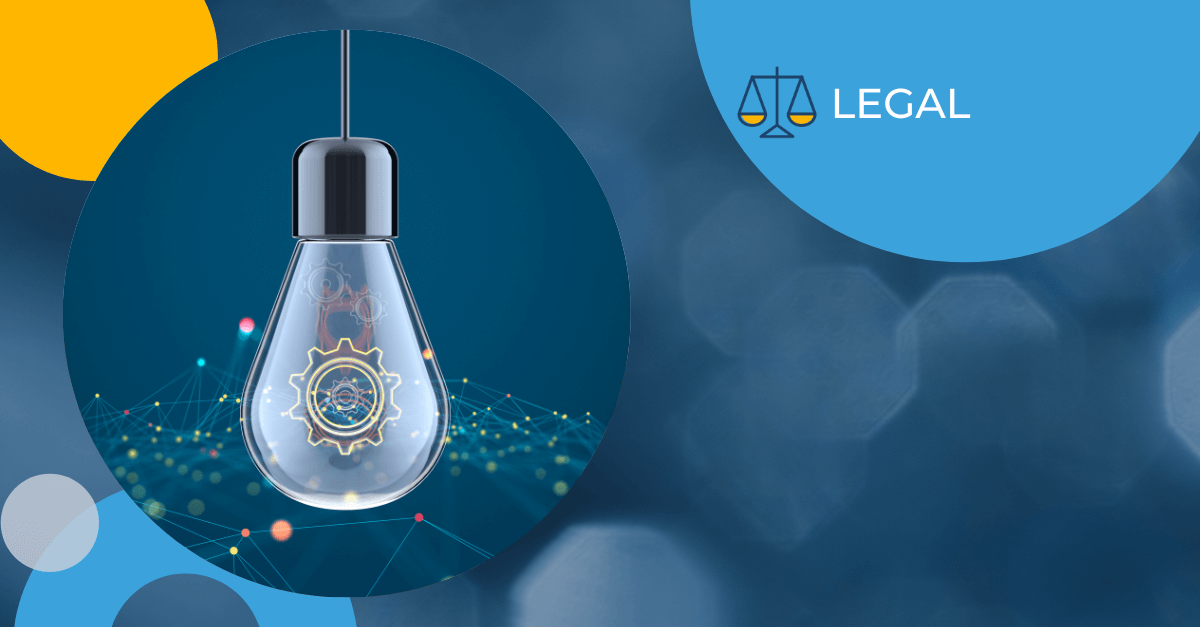As of June 8, 1995, the USPTO has offered inventors the option of filing a provisional patent application, which was “designed to provide a lower-cost first patent filing in the United States.” One of the key benefits of this option is that filing a provisional patent does not trigger the start of the 20-year patent term.
What is a provisional patent application?
A provisional patent application is often described as a placeholder for a future, non-provisional application that is based on the invention described in the provisional application. In contrast with a non-provisional application, a provisional application is exempt from:
- an inventor’s oath or declaration;
- the duty to disclose information material to patentability (prior art); and
- formal patent claims.
A provisional patent application will not be examined or disclosed by the USPTO because a provisional application cannot become a granted patent.
Then why should I file a provisional patent application?
The filing date of a provisional patent application establishes the priority date for a non-provisional patent application that claims the benefit of the invention described in the provisional application – so long as the non-provisional application is filed within 12 months of the provisional filing date.
During the 12-month period, the inventor can file additional provisionals that further elaborate on the invention – all of which can be included in the non-provisional application (with the oldest providing the priority date).
Be the first to file
When the America Invents Act came into effect in March 2013, the US patent process shifted away from its historic “first to invent” approach and adopted the globally practiced “first to file” system. Being able to establish a priority date for an early-stage invention is probably the greatest benefit of a provisional patent application, especially since the provisional application has no impact on the future patent’s 20-year term.
The expense of preparing and filing a good provisional application is about half the cost of preparing and filing a non-provisional application. With the priority date secured, the inventor now has 12 months to further develop the invention and validate its market potential before incurring the expense of filing a non-provisional patent application and seeing it through the patent examination process.
In the meantime, the inventor can use “patent pending” to describe the invention, enhancing its perceived value in the eyes of potential investors and partners.
Things to watch out for
A non-provisional patent application that references a provisional application must be based on the invention as it is described in the provisional application. Thus it is important to write the provisional patent application with great care, anticipating as many ways as possible of practicing the invention so as not to restrict the future non-provisional patent application (which cannot be changed so easily after filing).
Provisionals are often filed because the inventor wants to share the inventive solution with potential investors or partners as quickly as possible and seeks to protect it before showing it to others. It is important, however, not to fall into a false sense of security. Even a non-provisional patent application’s claims cannot be enforced until the patent has been granted. A provisional patent application affords even less protection.
IP trends
The graph below shows the number of provisional vs. non-provisional applications filed in the past decade (from 2009 to 2018), as taken from the USPTO’s annual workload tables. The number of provisional applications has increased 26% in that time, from just over 134,000 to just under 169,000. This upward trend indicates strong interest in leveraging provisional applications as part of an overall IP strategy.

An easy out
A final benefit of provisional applications is that they give the inventor a window of opportunity to further test the technological and commercial feasibility of an invention. If further testing yields poor or unprofitable results, the project can be dropped before committing to a long and potentially expensive non-provisional patent application process.


